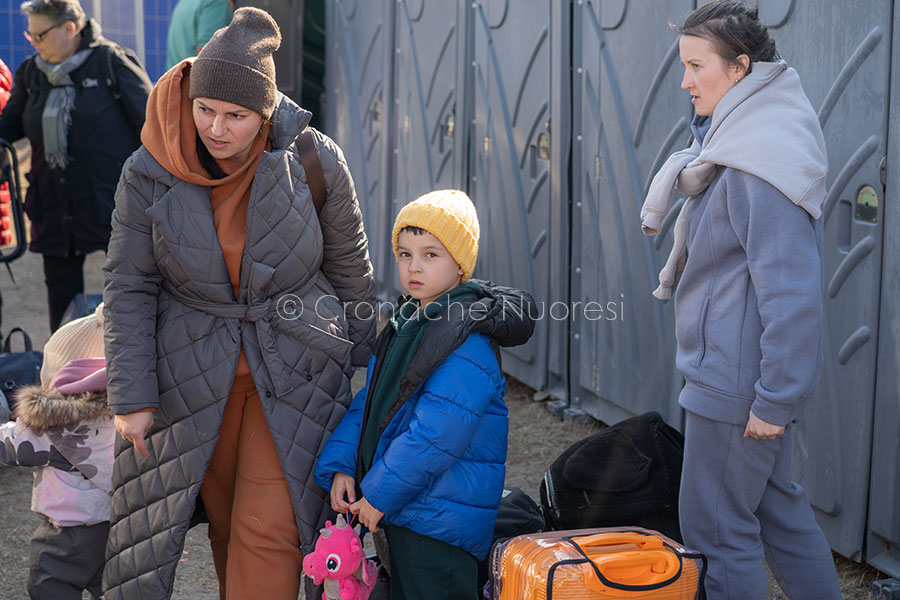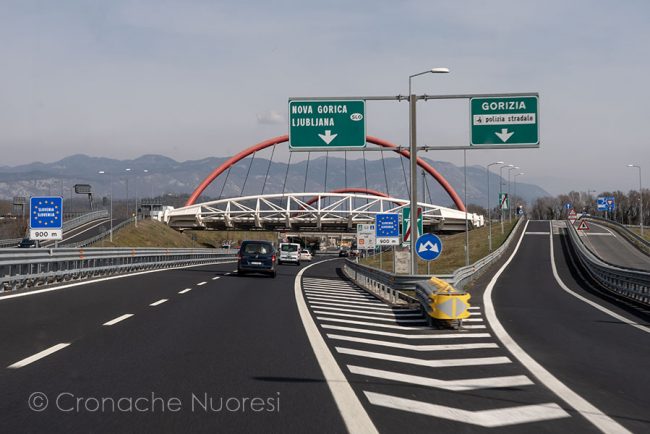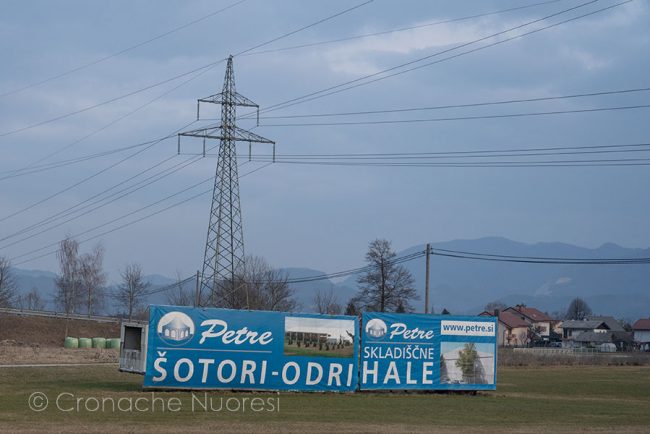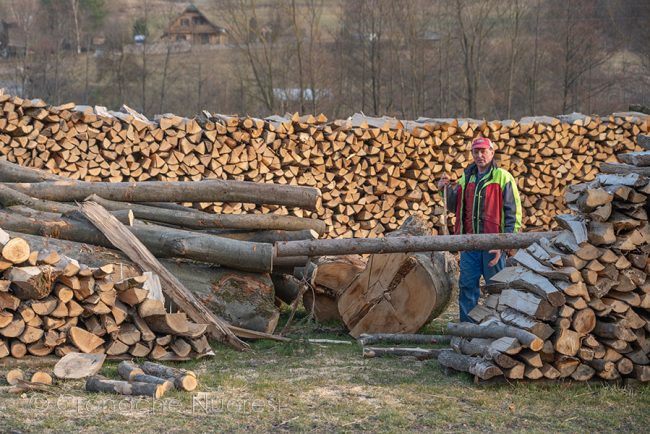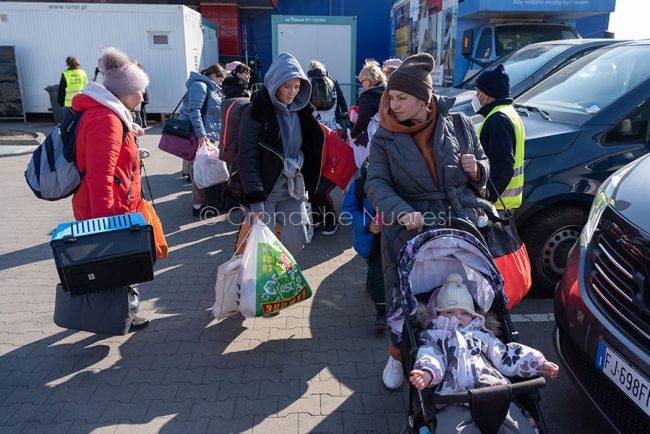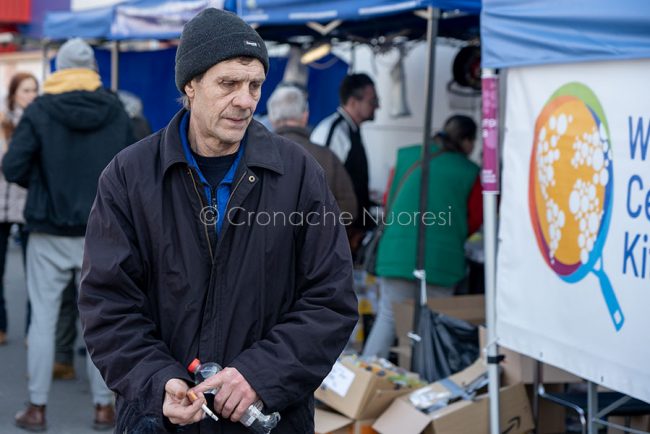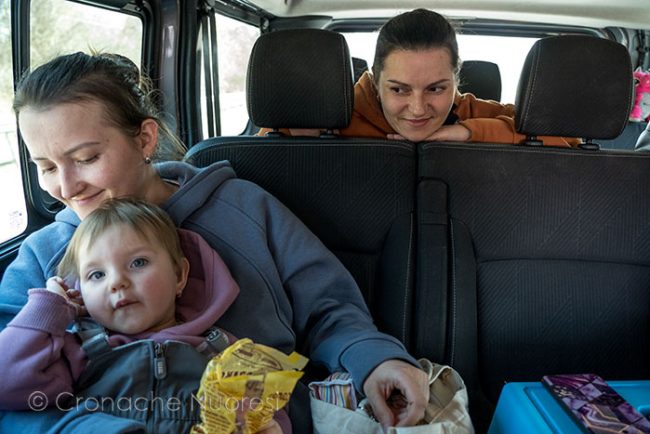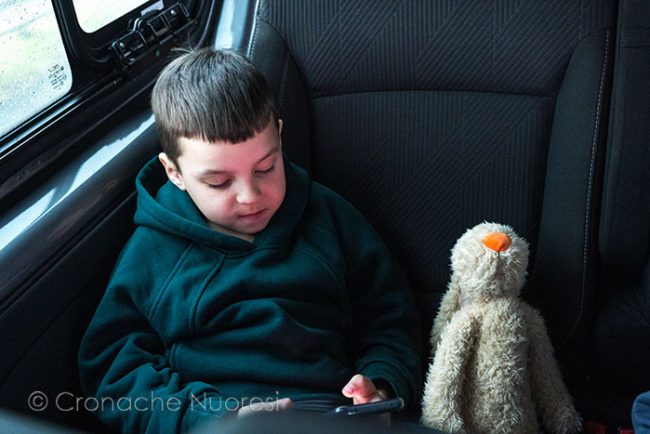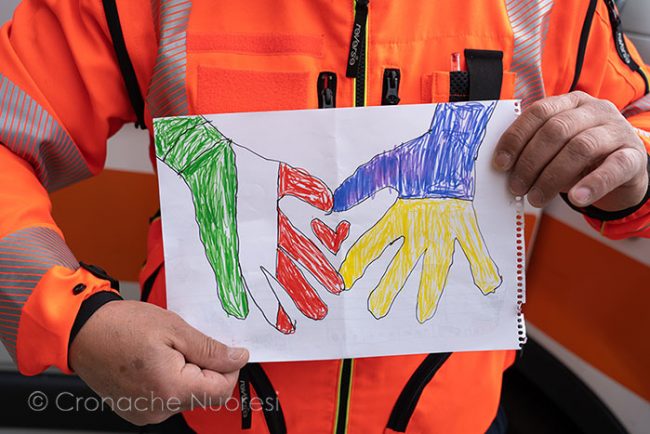THE JOURNEY – A one-way journey, from war to safeness: this is the living conditions of the Ukrainian people for weeks. While we live “safe in our warm homes” – to quote Primo Levi – being able to back home (because we have a home), finding “hot food and friendly faces” and continuing to wallow in selfishness and insensitivity, there is a multitude of people who no longer have their own home (because it was destroyed by Russian missiles or because they were forced to abandon it) nor their more or less comfortable life, as the war took it away from them, at any moment, without warning . People deprived of everything, sometimes even of their loved ones, and forced to flee. In the most fortunate cases, the refugees have only a few bags with them when they set out, just as the bombs surprised them. Any minute now, they lost everythings, they have “only” their own life and the hope of fleeing. This is the condition of Ukrainian women and children, while males aged 18 to 60, according to martial law, are forced to stay to fight and thus try to stem the advance of a gigantic enemy, against whom the hopes of victory are non-existent.
I leave Nuoro on the afternoon of Thursday 17 March 2022, together with the volunteers of the SVS association who organized the humanitarian mission, boarding from Olbia to the Peninsula: we will bring with us a load of basic necessities and medicines for the hospital of Kiev, thanks to generosity of Nuorese people, and we will bring to safety about thirty refugees who will find hospitality in Sardinia. My goal is to understand something more of what is happening and what the official sources say, speaking directly with the people who are experiencing the tragedy of war. In fact, having first-hand news is not easy, there is a lot of distrust and the few things that are told all seem to have a single pre-packaged matrix.
Three days and four nights on the road to reach the border between Poland and Ukraine, the scene for about a month of the war of occupation waged by Russia; 3,350 km (1600 outward and 1750 in return) to be covered almost non-stop, if not for a few coffees and a few hours of sleep, through Slovenia, Hungary, Slovakia and Poland and then the Czech Republic and Austria, before returning to Italy.
Breaking away from it’s own reality and immerse yourself in a universe like that of Eastern Europe is an intense, almost mystical experience, and crossing it as quickly as we are doing, makes it even more alienating. Beyond Gorizia, there are several roads which, contrary to popular belief, are clean to the limit of perfection; the currency is different (although they are part of the European Union, in fact, some states continue to maintain their minting); the physiognomy of the people, their language and attitude towards Italians are different (not always exactly friendly); the economy is different, based on endless cereal crops and wood processing; there are several houses and landscapes, often dotted with huge billboards of luxury goods, such as cars or the nearby fast food restaurant (yes, even here); there are different brands of fuel and related service areas (and also the price, everywhere close to 1.6 euros, while in Italy we are over 2.20 euros), and even the music that plays the radio is different, everything that the radio broadcasts is unknown . Everything is different but is damn beautiful and fascinating, at times enchanted.
In the meantime, the distances run fast, every 5-600 kilometers we alternate driving vans. Seen through the windows of our vehicles, it is surprising the attitude of the local populations, who, despite having the war just a few kilometers away and living with the awareness that it crosses over, deliberately or by mistake, sadly continue to live their daily lives.
As we cross the small mountain villages we observe the woodcutters who rearrange the trunks in the fields or outside the sawmills; the huge tractors engaged in plowing the fields; children who go to school; women who look after the garden or do the shopping, even some cyclists. In short, an apparent, terrible normality.
On the slopes of the so-called “Valley of Death”, however, on the border between Slovakia and Poland, we see the first signs of war: in many places old tanks from the Second World War have become a monument to those killed in combat, including several Italians. Palpable tensions between the crews is clear and the programs on the radio invite to accelerate , especially at the points where the roads approach the border line.
We must hurry to reach Przemyśl, our destination, once the last bastion of the Austro-Hungarian Empire, now lying on the border between Poland and Ukraine, less than 100 km from Lviv, one of the hotspots of the war.
ARRIVAL IN PRZEMYŚL – After a day and a half of travel and having crossed first Italy and then the whole of Europe, at 12.30 on Saturday 19 March we enter in Przemyśl. A few moments later we meet some kids just under thirteen, who proudly wear military uniforms, apparently out of solidarity with the Ukrainian brothers.
Finally we reach the oratory of the Salesian church of St. Joseph, where we deliver our precious load of basic necessities and medicines in the hands of the young volunteers coordinated by Sister Anna, who will then take care of delivering them to the hospitals in Kiev.
«We are afraid – say, instead, two ladies walking on the street a short distance from the church – but what should we do? Unfortunately we can only hope that all this will end as soon as possible ».
From here we continue the journey to the refugee camp, set up inside a huge parking lot located between some shopping centers and the highway that leads directly to Lviv.
THE REFUGEE CAMP – The people we meet at the camp are exactly like us, like our mothers, like our children, but who have had the misfortune of having lost their daily life and hope to get it back as soon as possible. Here, too, volunteers from all over Europe, coordinated by the Red Cross and the army, unload aid from their vans to make room for the refugees that will take to safety, away from the war.
On the one hand there is a no-stop flows of people, especially women and children, and, on the other, sitting on suitcases or makeshift supports waiting for some relative to join them, everywhere elderly with their gaze lost in space, aware that they will probably never be able to return at home. Even if with a veil of sadness, in the meantime, the children enjoy the games that some volunteers take care to distribute to them.
The camp is bordered on one side by tents that temporarily host the thousands of refugees who pass through it every day, on the other, the toilets and the refreshment area, where hot meals are served continuously and, finally, the section where they are register data and the destination of the departing people.
This community is characterized by a profound humility but also by a great pride. They don’t speek in the first person but speak on behalf of all their people. In a world where everyone shares everything on social media, moreover, it is strange how in recent weeks there has been very little circulation of images by Ukrainian citizens, apart from the shots released by international agencies and the “official” ones released on the various Telegram channels. “The leadership of our country – explains Nadiya, a girl fleeing from Kiev with her one year old child, who before the conflict was a partner of a well-known law firm – asks not to take or publish photos and videos in real time on the consequences of the attacks, as this would allow Russian intelligence to see the results of their strikes, as well as the deployment of our military personnel shooting down the missiles ».
Meanwhile, the time available is over. Our group has arrived: they are 19 women and 11 children, almost all from Kiev. The documents and the possession of the green pass are carefully checked (despite the war, Covid is always lurking) and, once the few luggage are loaded, we leave.
THE RETURN – The images and emotions from our permanence at the refugee camp in Przemyśl are now imprinted in the memory and, with the regret of not having done enough, the time has come to get back on the road. Everything is fast, as and perhaps more than the outward journey; we have another 1700 km to cover in a day and a half, before boarding for Sardinia.
The trip, is also an opportunity to consolidate the relationships between the people of the crews, extraordinary people, with a great heart. Thinking that those bonds created by sharing such a strong and meaningful experience can and should last forever.
Meanwhile, we make a change to the route, we don’t go through Budapest, as in the outward journey, but we will pass through Krakow and, having crossed Austria, we will enter in Italy from Udine. This time the journey takes on different connotations. We have on board a lady with her dog, and two sisters with their children, one of just over a year and one of seven. Nice people, who never complain and never ask for anything. Daryna knows a few words of Italian but we are able to communicate thanks to the automatic translator on her mobile phone, a bit longer and dehumanizing than the face-to-face conversation, but it can be done. I try to understand if the news stories beaten by the agencies correspond to what they know, but the mistrust remains and the answers seem once again stereotyped. When I ask about the atrocities perpetrated during the occupation of Mariupol last Monday – news published by the Italian media, my interlocutor explains: “Unfortunately, rape has become a habit for Russian soldiers. But we cannot accept the terms of the Kremlin because in this case our deaths would have been in vain. It is clear that in the event of Ukraine’s surrender, Russia will continue to fight with other countries, which is unacceptable ”.
After more than 7 hours of travel and 700 km traveled we stop in the ultramodern and icy part of Vienna, for a few hours of sleep. The temperatures are freezing, well below freezing, but at dawn we are on the march again. The Czech and Austrian landscapes are different from the previous ones, equally mountainous (in many places there is still frozen snow), but traveling mainly on the motorway they appear less man-made.
At 13.00 on Sunday we arrive at the border with Italy, where further document checks are carried out. After crossing the Alps, the traffic and the worst conditions of the Italian roads force us to accumulate a lot of delay and to arrive at the port of Livorno just in time for boarding. But first, our friends still have to take a test to ward off any possible case of positivity to Covid. The USCA staff proceeds, cordial and polite: one by one everyone carries out the screening, including the children, many of whom appear literally terrified. Everything goes smoothly and we can get on the ferry.
On Monday morning we land back in Olbia, where document checks are carried out again and authorizations are issued in an equipped room in the port area. We leave once again. After so much running and so much news, everything suddenly begins to reappear familiar and, as I feared at the start, the feeling begins to emerge that soon everything will appear like a dream, with blurred outlines.
At 10.30 we arrive in Nuoro where the volunteers are ready to welcome warmly the convoy and, together with the Civil Protection, to give a first support to the refugees before they set off on their journey to their destination.
Salvatore Novellu – © All rights reserved

